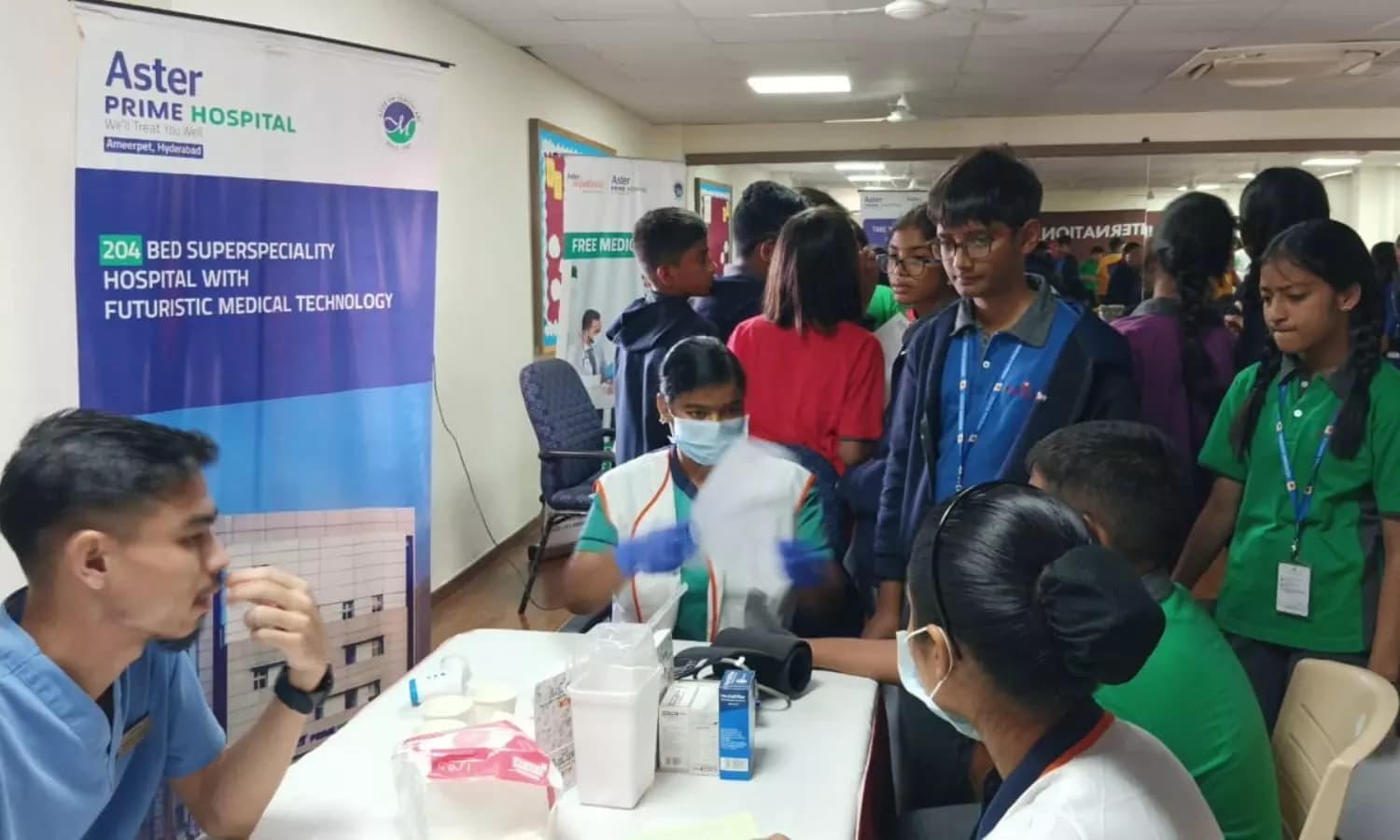Everyday Foods That Outperform Probiotic Supplements in Boosting Gut Health and Immunity
Boost Gut Health and Immunity: Everyday Foods That Outperform Probiotic SupplementsGut health is not just a buzzword, it is the foundation of a strong immune system and overall wellbeing. Nutritionists say that while probiotic supplements have their place, everyday foods or the ones on your regular grocery list can powerfully shape your gut microbiome and bolster immunity.In an interview with the Times of India, Sonia Mehta, Nutritionist and Founder of EverBloom, shared, “Think of your gut as the body’s security gate and most of the guards that decide what enters the bloodstream live inside the intestine. Feeding those guards the right everyday foods keeps the gate strong without paying for pills. Thus, your gut is integral in shaping your overall health, and a large portion of the immune system is closely linked to the digestive tract.”Five Effective Ways to Detoxify Your Gut HealthBringing her expertise to the same, Niru Kumari, Executive Dietician at Regency Health in Kanpur, explained, “The gut isn’t just where food is digested; it is also the largest immune organ in the body, and good gut health is fundamental to a robust immune system and general well-being of human beings. Around 70% of immune cells sit in the gut lining, and they constantly interact with the microbes living there. When the microbiome is diverse and balanced, the immune system responds appropriately.When it’s not, we see more inflammation, frequent infections, and even fatigue or low mood.”While probiotic supplements are often highlighted for supporting gut health, it is important to remember that everyday foods are simple, accessible and part of regular meals and can equally support a balanced gut microbiome and stronger immunity. This approach is sustainable, natural and rooted in daily habits rather than quick fixes.Fiber-rich staples: Oats, whole grains, fruits and vegetablesSonia Mehta said, “One of the most impactful categories of gut-friendly foods is fiber-rich foods. They are also called probiotics, which help these good bacteria to thrive and perform essential functions such as protecting the gut lining and reducing inflammation. Incorporating Oats, brown rice, whole-wheat roti, ragi, bajra, jowar, plus fruits such as bananas, apples, pears, papaya, berries, and vegetables like spinach, carrots, sweet potato, pumpkin, beetroot, beans, gives both soft and rough fibre to the body, supporting digestion and regular bowel movements.Additionally, beans and lentils, like moong dal, masoor dal, chickpeas, and rajma, offer fiber and plant-based protein, making them valuable everyday staples.”Including yogurt, kefir, fermented vegetables (kimchi, sauerkraut), or foods high in prebiotics (onions, garlic, bananas, oats) may support your gut microbiome, which in turn supports immune health and may enhance vaccine efficacy.While much attention goes to probiotics, the World Gastroenterology Organisation (WGO) notes that prebiotics are critical for maintaining gut microbiome balance, as they selectively nourish beneficial bacteria. Niru Kumari asserted, “Equally important are prebiotic foods, as these feed the good bacteria already present in sweet potato, flaxseed, green peas, barley and asparagus, which are solid choices.They provide the fiber that gut bacteria ferment into short-chain fatty acids, which strengthen the gut barrier and regulate immune responses.”According to a2018 study published in Journal of Nutrition, “Dietary fiber has profound effects on the composition and metabolic activity of the gut microbiota, leading to increased short-chain fatty acids that promote gut barrier function and systemic immunity.” Nutritive fiber also feeds beneficial bacteria that produce short-chain fatty acids, which is key for immune regulation and inflammation control.Fermented foods:Yogurt, dahi, chaas, idli/dosa batter“Fermented foods introduce beneficial live cultures into the gut. A daily bowl of dahi, a glass of chaas, idli or dosa batter that has risen overnight, or a spoon of natural pickle (no vinegar) carries live cultures that settle in and widen microbial variety,” Sonia Mehta said. “Kefir, kimchi and sauerkraut also work the same way if available and offer additional probiotic benefits.”Niru Kumari elaborated, “Although probiotics and supplements are gaining popularity, the reality is that many basic, everyday foods can naturally improve gut health and immunity and you don't need expensive probiotics to support this.Incorporating traditional everyday food, such as kefir (fermented drink made with milk), sauerkraut (fermented shredded cabbage with salt), and kombucha (fermented drink made with tea) is helpful, we can also have local options like kanji (fermented carrot drink), and you can also add yoghurt, which also consists lactobacillus which helps with gut flora and also incorporate sprouted moong or moth beans, and overnight-soaked poha or idlis.These naturally introduce live bacteria into the gut and help repopulate it after antibiotics or illness.”About 70% of the immune system sits in the gut - a shocker for most adults, but nature established this alliance early. When seasonal sniffles strike, digestion becomes sluggish. Probiotics in curd help balance gut bacteria, which in turn boost immunity. Swap sugary instant beverages for a chilled bowl of curd with chopped banana, honey drizzle, or roasted cumin. In winter, serve it slightly tempered, a pinch of warm cinnamon or a few curry leaves sautéed in ghee can make curd more comforting and digestion-friendly.A2020 study in Cell journalfound, “Consumption of fermented foods increases gut microbial diversity and decreases markers of systemic inflammation, suggesting broad benefits for immune resilience.” This research supports expert advice that regularly eating fermented foods can expand your microbiome diversity, which is linked to better immune responses.Healthy fats and anti-inflammatory ingredients: Nuts, seeds, spicesSonia Mehta said, “Certain ingredients are known to help with inflammation or digestion, which can keep your gut healthy. Some common spices in your kitchen, like turmeric, ginger, garlic, black pepper, cumin, carom seeds and fennel, can also help you relax and can be easily added to your daily cooking. Healthy fats also play a role in maintaining gut lining integrity and supporting nutrient absorption. Almonds, walnuts, sesame seeds, flaxseeds, chia seeds, avocado and cold-pressed oils such as mustard, groundnut or olive oil provide essential fatty acids that support immune function.”The modern diet is high in sugar, low in fiber and full of ultra-processed foods, which do not really support your gut health but are an enemy to your gut. Niru Kumari said, “It reduces microbial diversity and promotes gut permeability, which can trigger low-grade inflammation and repeated infections. Encouraging patients to consume a variety of seasonal vegetables, fermented beverages and fiber-rich grains can make a tangible difference in gut health.Combining these dietary changes with adequate hydration, regular physical activity, and stress management creates a holistic approach to wellness.”The skin of almonds adds extra dietary fiber, as well as compounds that feed beneficial gut bacteria. Almond skins contain prebiotic fibers and phenolic substances that improve the intestinal microbiota profile. Having a richer gut microbiome helps with digestion, reduces gut inflammation, and supports overall immune health. Eating the skin also may help the gut transit time, keeping things moving more smoothly.As per a2019 study in Frontiers in Immunology, “Omega-3 fatty acids and plant bioactives such as polyphenols exhibit anti-inflammatory effects and modulate immune cell signalling.” The science aligns with traditional wisdom: everyday foods rich in healthy fats and spices are integral for moderating inflammation and supporting immunity.The holistic approach: Everyday eating over supplementsExperts agree that gut and immune health is not about trendy diets or expensive pills. It is about consistent, balanced eating patterns built around whole, traditional foods.Niru Kumari summarised the philosophy, “Nourishing the gut is not a matter of trendy diets or costly supplements; it is about consistency, balance and returning to wholesome, traditional food practices with which our bodies have evolved.When we eat right for our gut, we are in fact strengthening our immunity from within.”Takeaway: Your plate is a powerful immune allyStrong gut and immune health does not require expensive probiotics or pills. It starts with everyday foods that feed good bacteria, reduce inflammation and support digestion. From fiber-rich staples and fermented picks to healthy fats and spices, the foods you enjoy every day can help your immune system function at its best.When you nourish your gut, you are investing in immune resilience and in long-term health that starts with what’s on your plate.Note: The information provided in this article is for educational purposes only and is not intended as medical advice. Always consult with a qualified healthcare professional before starting any new medication or treatment and before changing your diet or supplement regimen.Get an chance to win ₹5000 Amazon Voucher by taking part in India's Biggest Habit Index! Take the survey here






&w=3840&q=75)


&w=3840&q=75)


&w=3840&q=75)


&w=3840&q=75)






&w=3840&q=75)

























